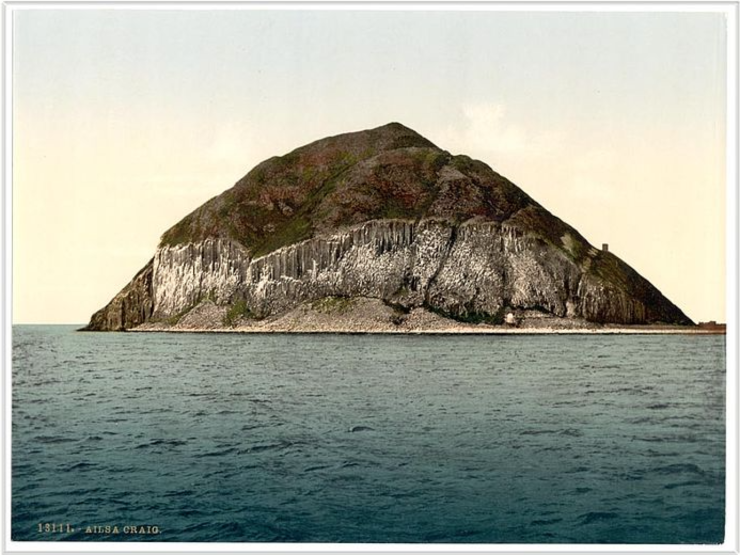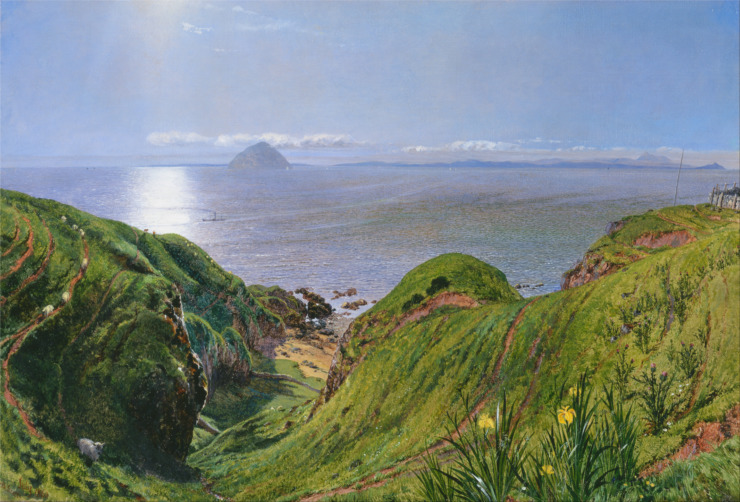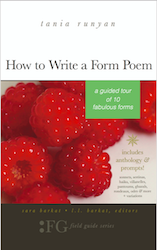To Ailsa Rock
Hearken, thou craggy ocean pyramid!
Give answer from thy voice, the sea-fowl’s screams!
When were thy shoulders mantled in huge streams!
When, from the sun, was thy broad forehead hid?
How long is ‘t since the mighty power bid
Thee heave to airy sleep from fathom dreams?
Sleep in the lap of thunder or sun-beams,
Or when gray clouds are thy cold cover-lid?
Thou answer’st not, for thou art dead asleep!
Thy life is but two dead eternities —
The last in air, the former in the deep;
First with the whales, last with the eagle-skies —
Drown’d wast thou till an earthquake made thee steep,
Another cannot wake thy giant size.
-John Keats
Enjoy Artistic Representations of “To Ailsa Rock” by John Keats

Photograph “General view Alisa Craig Scotland” 8 January 2007.

Ailsa Craig by William Bell Scott, 1860.
Listen to this Reading of “To Ailsa Rock”
Listen to this Musical Interpretation of “To Ailsa Rock” by John Keats
John Keats Biography
Keats was born in London on Oct. 31, 1795; a few weeks later he was baptized at St. Botolph Without Bishopsgate Church, near where his parents lived and father worked as the manager of a stable owned by his father-in-law. Keats was the eldest of four children, with George, Tom, and Fanny following him. The family was well off enough that the boys were sent to Clark’s Academy in Edmonton at what is now the north London borough of Enfield for their education; it was riding his horse home from a visit to the school that Keats’ father fell and died the next day. His mother remarried (rather quickly, in fact), fought with the rest of the family, and died fairly young from consumption or tuberculosis, which was all too common at the time and would eventually claim the life of Keats’ youngest brother, Tom, as well as Keats himself.
He was apprenticed to a local doctor, but the relationship didn’t seem to work too well. He ended up working at St. Guy’s Hospital in the Southwark district of London, continuing his medical training and writing poetry (the site of the original St. Guy’s in now occupied by London’s tallest office building, known locally as “The Shard”).
While Keats had numerous city connections (Anita Miller also has a “Keats in the City” walk), it is with Hampstead that he is most closely associated. Fellow poets lived there, as did the editor who first published his poetry. Artists whom Keats associated with lived there. Keats himself would move there with his brothers. Keats and his friends would wander Hampstead Heath, talking and arguing poetry and the issues of the day. After moving into Wentworth House in Hampstead, Keats wrote five of six famous odes, including “Ode to a Nightingale.” And it would be at Wentworth House in Hampstead that Keats would realize that he was dying from the same disease that took his mother and younger brother.
Enjoyed To Ailsa Rock by John Keats and want to know more about Keats’ life? Try A Month With Keats: A Walk Into His Life
That’s it for To Ailsa Rock!
BUY ‘HOW TO WRITE A FORM POEM’ NOW!
